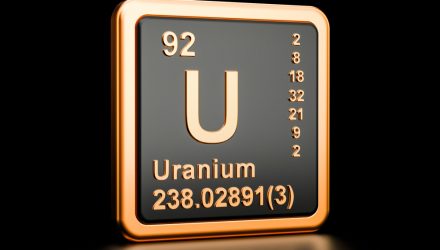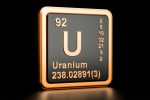Uranium prices continue to climb, with major global investment firms and hedge funds looking to get in on the action. Fundamentally, a supply/demand imbalance should keep prices bullish moving forward.
While equities regained their footing in January after a slow start, uranium continued its upward trajectory. As global adoption of nuclear energy continues, so does uranium’s upward climb.
“Price momentum has accelerated, particularly since September 2023,” mentioned Jacob White, ETF product manager at Sprott Asset Management, in a Sprott Uranium Report. “In January, the price briefly spiked to $106 before settling back to $101, only to rise again to $106.51 on February 1.”
Basic economics say that as demand climbs, supply needs to match to keep prices steady. However, therein lies the prime catalyst for uranium prices climbing higher. Anticipation of supply constraints from leading global producers is adding extra momentum to rising uranium prices.
“The world’s largest uranium producer, NAC Kazatomprom JSC (Kazatomprom), announced that it would not meet its previously announced production increases for 2024 and 2025,” the report added. “This sudden reversal after indicating in September 2023 that it would expand production, signaled to industry participants that the supply response to the fundamental deficit in the uranium market will take longer than anticipated.”
The World Uranium Index is up almost 30% the past year, rising since the start of summer 2023. Unless global producers can ease future supply worries, prices could see higher highs.
Long-Term Outperformance Inevitable
Investors looking to gain commodities exposure, especially via uranium given its strong growth trajectory, may want to look at miners. As uranium prices rise, the supply/demand imbalance will feed into more demand for mining services, and historically, mining companies have performed well against other assets, including other commodities.
“Over the longer term, physical uranium and uranium mining equities have demonstrated significant outperformance against broad asset classes, particularly other commodities,” the Sprott report added.
Given this, investors may want to consider a pair of mining ETFs from Sprott. One is the Sprott Uranium Miners ETF (URNM), which tracks the North Shore Global Uranium Mining Index. It invests in global firms that mine, develop, and produce the metal as well as firms that hold the physical metal or royalties from it.
For even greater growth exposure, small-cap companies can offer amplified moves to bullish markets. So rather than piecemeal a small uranium mining portfolio of individual stocks, an easier way is with the Sprott Junior Uranium Miners ETF (URNJ). It seeks to provide investment results that, before fees and expenses, correspond generally to the total return performance of the Nasdaq Sprott Junior Uranium Miners Index. That index tracks mid-, small- and micro-cap companies in the metal’s mining business.
For more news, information, and analysis, visit the Gold/Silver/Critical Minerals Channel.









